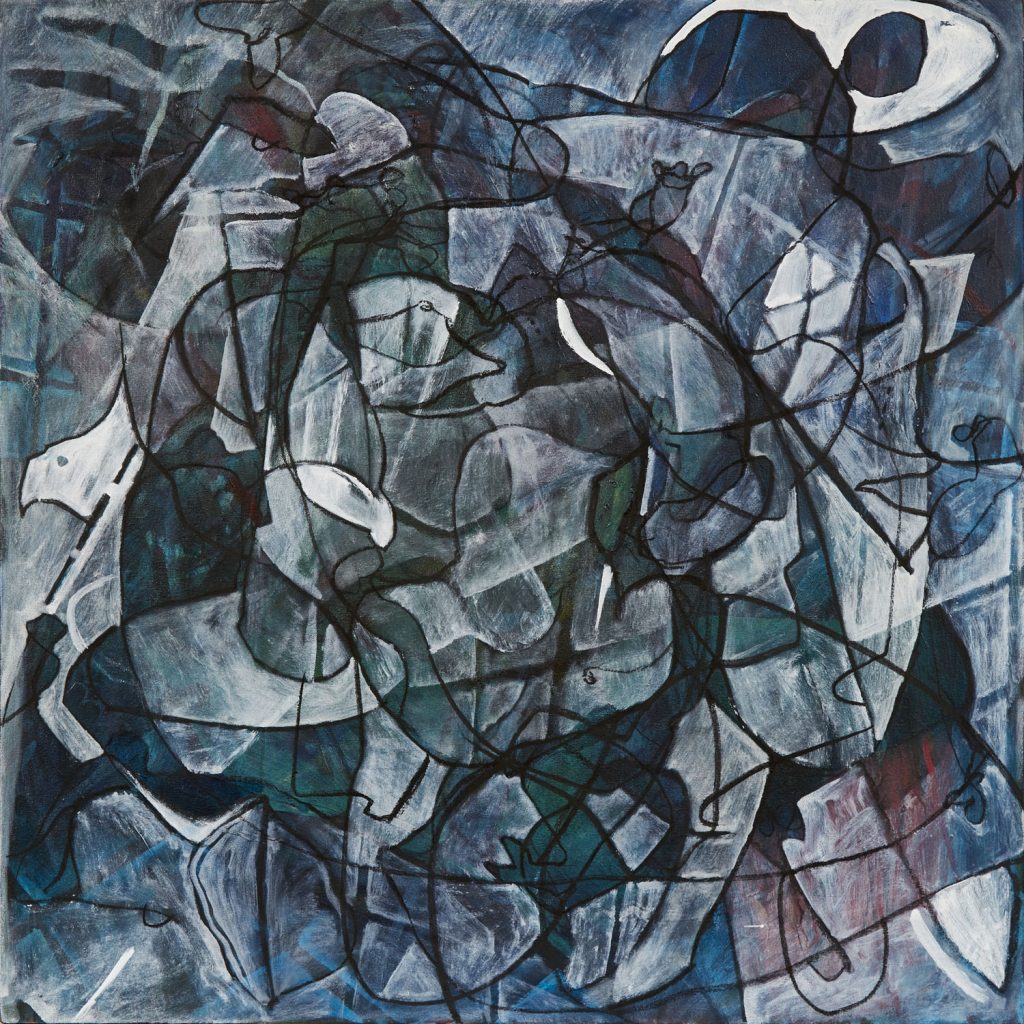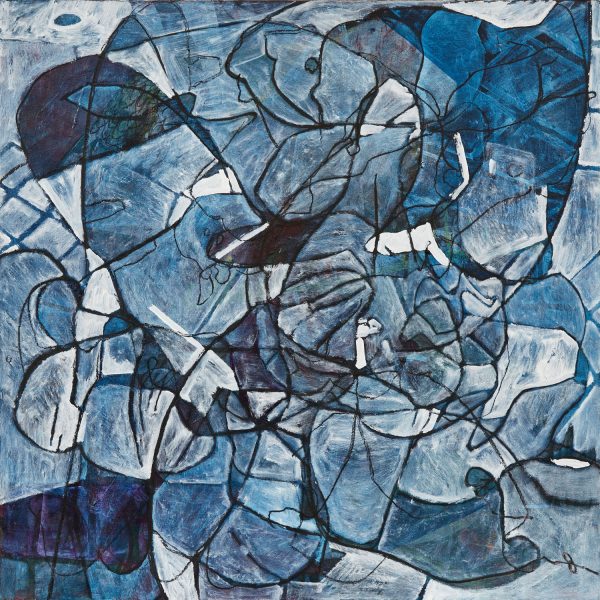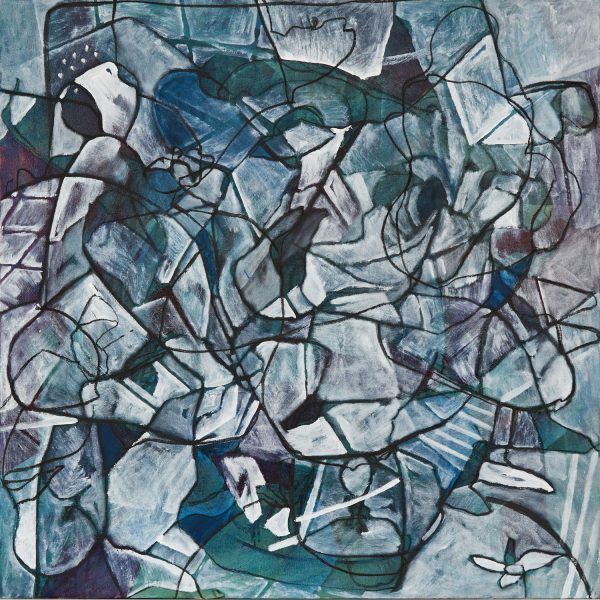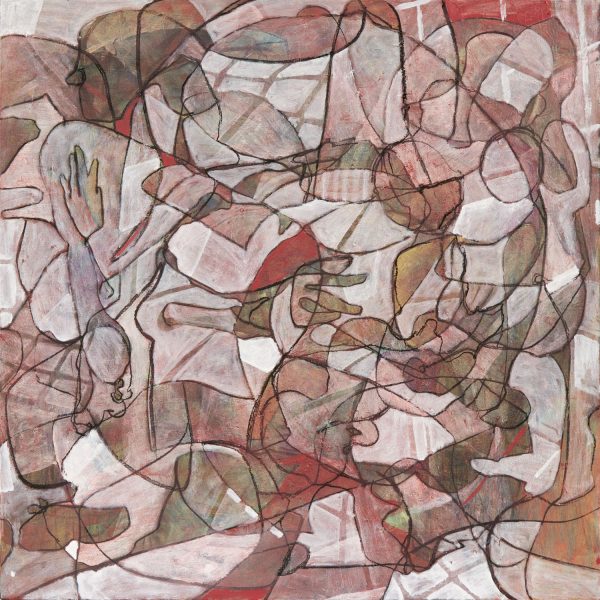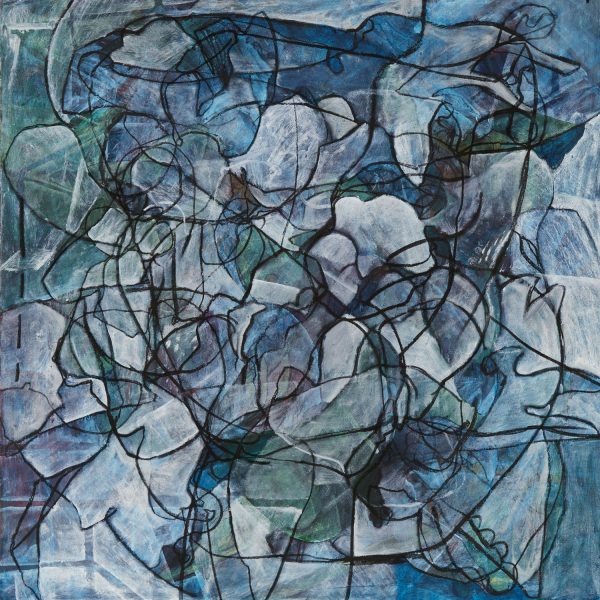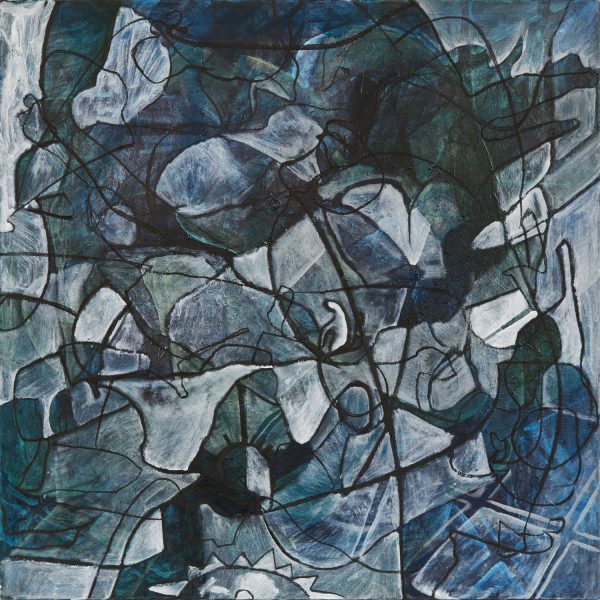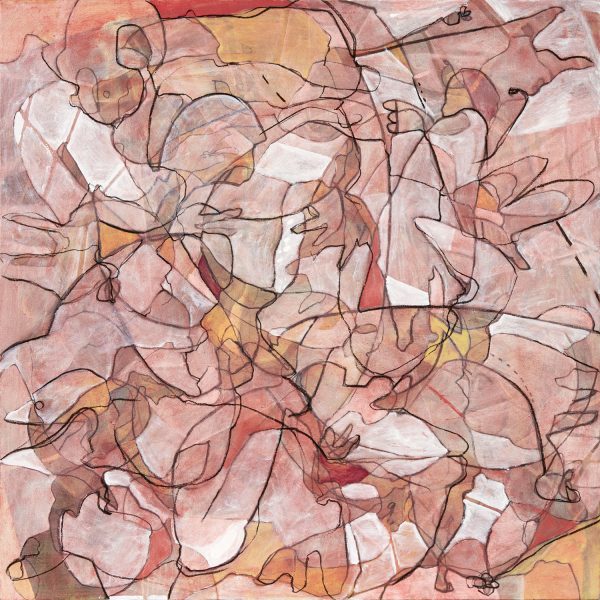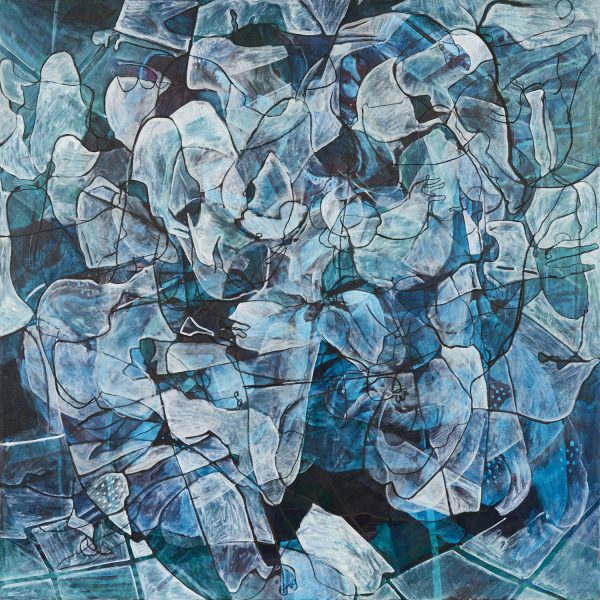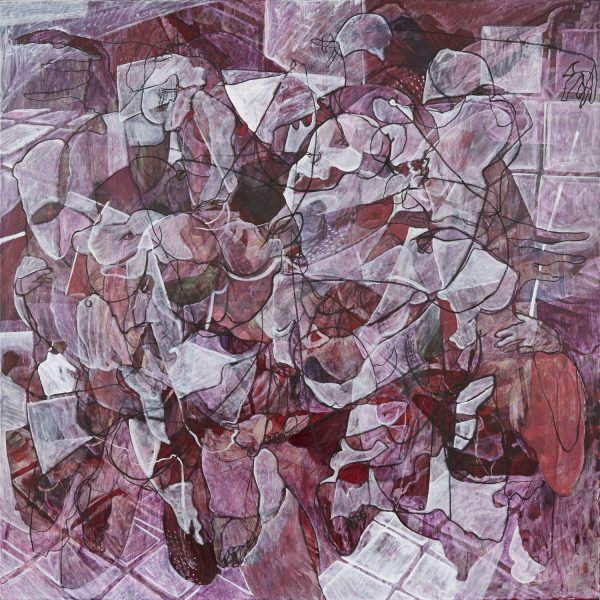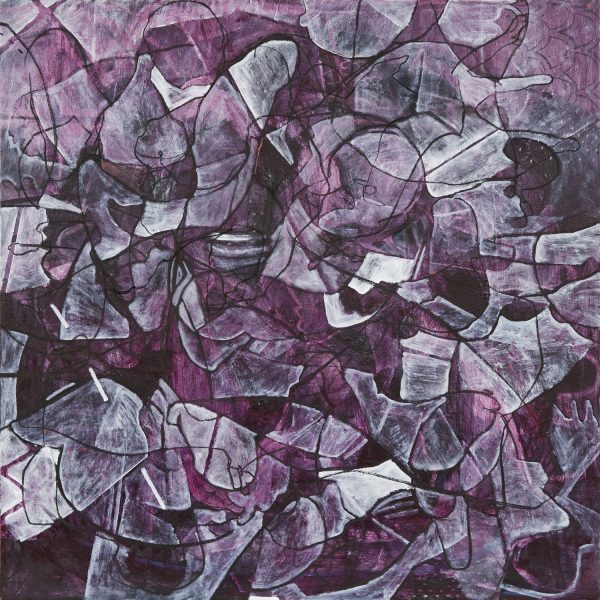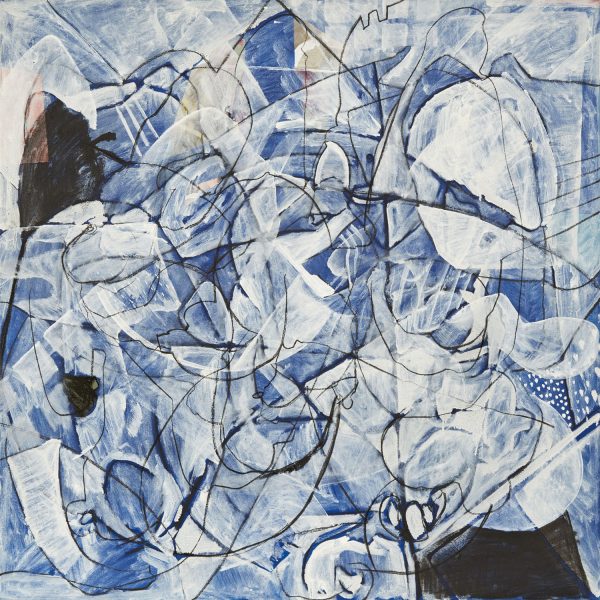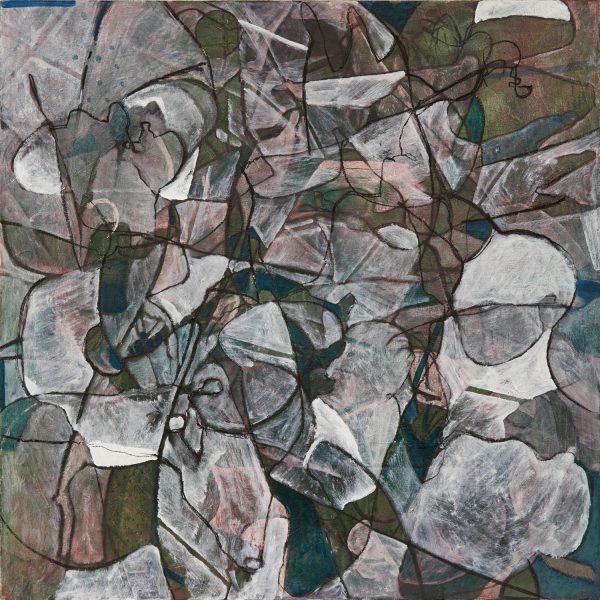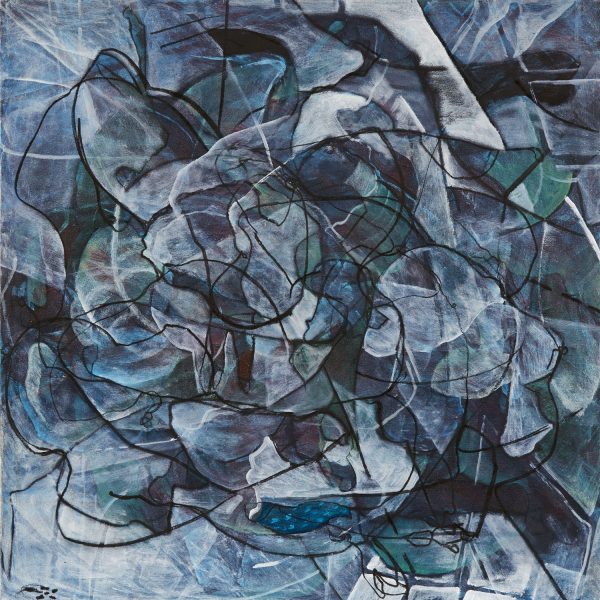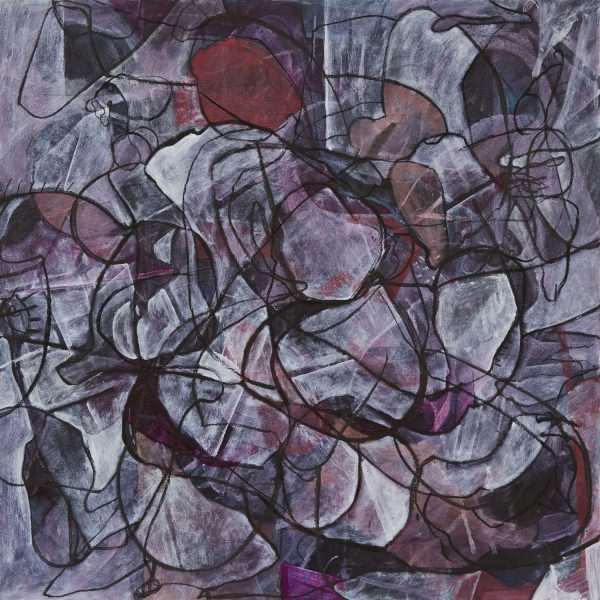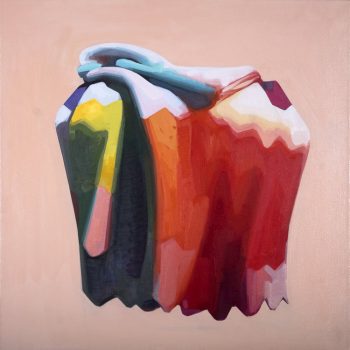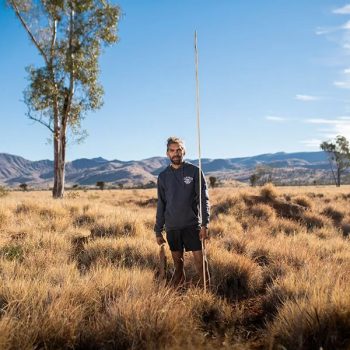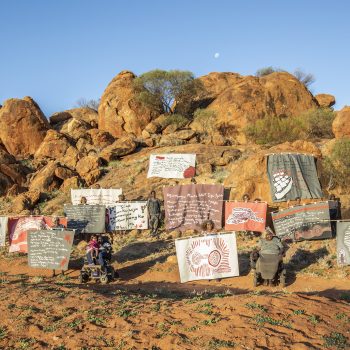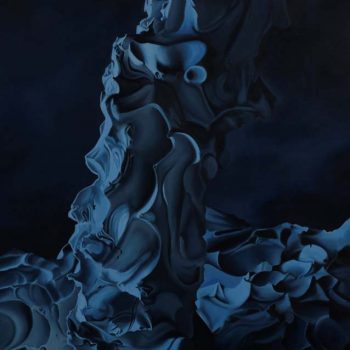Read about the conceptual complexity of the works in this Melbourne exhibition. Observe the symphonic beauty of palette, form and line in these paintings.
____________________________
The Valley – Below exhibition is on at Metro Gallery, Melbourne Until 18 August 2018
_________________________________________
I want a work that could change the course of a river, stop a bullet or turn back the tide. Otherwise, what’s the point?
The Valley – Below is a concept which in the final analysis can be reduced to the primal battleground that is Brock Q Piper’s life. As a dedicated, vocational artist the battle is fought on multiple fronts. The personal odyssey towards the successful completion of the Valley – Below, takes Piper to the pits of the Colosseum and into the deep waters of Jungian theory to confront the shadow.
The shadow represents the artist’s other and is the embodiment of the powerful negative and destructive powers the artist faces each day in the studio. The omnipotent other must be overcome and it is this battle which reflects the indistinguishable relationship between the artist and the body of work that is intricately linked to his identity. In the final incarnation of success or failure, Piper becomes the Valley – Below.
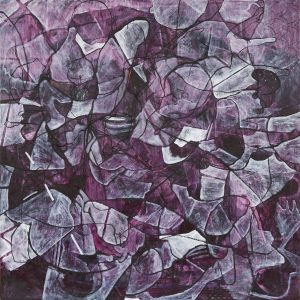
It’s difficult to get past the obvious physical beauty endemic to the works in the Valley – Below. While individual elements are recognisable in some form, the works in this series, seem more personal as if Piper has dug deeper, scooping from the bottom of the well, a well in which amorphous material extant from the artist’s first journeying’s into art and interpretation reside. Piper has consistently painted his
…life, my subject has and always will be my life, the things around me and the things I feel
In the opening quote, Piper uses strong landscape based language to describe the desired outcome …could change the course of a river…turn back the tide…
Contemplating the series, there is a sense that vestiges of memory-matter have been sifted through, the unnecessary filtered out, leaving exposed in the sieve the necessary deposits required for the conceptual representation of the Valley – Below.
The country which enveloped Piper as a child growing up on a farm in Tumut (west of Canberra in the Snowy Mountains), has imprinted its physical properties upon his identity in myriad unique ways. There can be no denying the pristine primeval and spectacular beauty of this landscape: add to that the experience of painting what was around him as a small child on the back veranda with his Grandmother; he comments on her influence,
She would paint birds on the family farm… I…would paint for hours with my grandmother. She taught me lessons that I will never fully understand…
Piper abstracts and amplifies components of his journey to the present day; inevitably that includes, to some extent, abstracting the wild untouched beauty of the landscape he grew up in. Inevitably physical and psychological landscapes comprise valleys, mountains, plateaus and everything (large or small / animate or inanimate) in between; moreover, Piper specifically mentions the bird life,
I have always been fascinated by birds in flight. The way they fold themselves, twist and contort their colourful bodies to float effortlessly through the trees. I am looking to create a visual poem through my work. Attempting to will the birds out of mid-air, to grapple with them mid-flight…
There are a number of inescapable facts which derive from the above quote. Firstly, the direct reference to and aspects of flora and fauna that inhabit the Tumut region, one soaked up by the nascent mind of the child painter.
Secondly, the reference to visual poetry; the consistent presentation of patterns, forms, interstices, line and tonal transitioning establish these works as visual poems in that through these devices they compact modes of communication; that of the visual, conceptual and idiosyncratic into singular, multi-interpretational compositions. Certainly, the individual works constituting the Valley – Below are to the whole as individual leaves are to the tree, or individual pebbles are to the creek bed.
Piper speaks of visual poetry; the refinements of colour and form are at once intuitive, sophisticated and symbolic they flow adaptively, in a nuanced way as they do in nature. There is also a sense that as in life and nature nothing proceeds quite how we envisage.
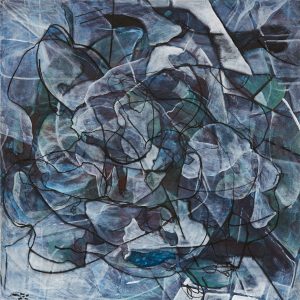
Arrangement No. 8 (The Sirens, whatever it takes to learn to swim) is on one level a tour de force of shimmering glacial blues transitioning to teal and charcoal-teal with touches of optimistic ‘green’: shards of ice and snowbound crests in a turbulent tumbling of matter circled continuously by the black line. In Tumut winters see snow on the surrounding hills and fogs and heavy frosts in the valley
There is a glimpse or shadow of a bird in flight, glimpses of illumination emerging from the shadows. While the power and beauty displayed by this work captures our attention, is this a representation of those first days in the studio: of fear and excitement in equal measure?
The title mentions water, an endemic feature of the Tumut and wider Snowy Mountains area; learning to swim at once an analogy for keeping your head above water and conquering your fears. The work transitions symbolically from a dark icy winter into spring: from a state of being at the start of something big, the fog, snow and ice begin to clear so that you see in the distance the first signpost leading you through the valley.
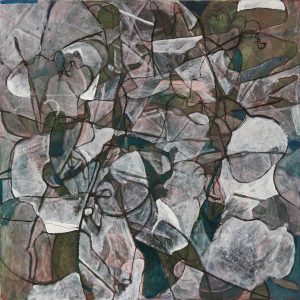
Arrangement No. 6 (The Expectations, Gifts for Salome), is a work found in the earthy or dirty palette of nature. It is represented by a flatter calmer abutment of elements; a figure looks into the work from the right perhaps surveying the planes of existence confronting him, or the calm before the storm. However, overall there is a sense that the process, while a monumental one is one infused with hope.
Moreover, while the beauty of nature could be said to belie the perpetual battles which take place for access to light, water, and nutrients to both flower and procreate there is an inherent fragility in nature, a delicate balance. That balance in nature (at the hands of man, beast or climate) is a fact that eucalyptus saxatilis can testify to as endangered. Otherwise known as, Suggen Buggen Mallee from the Tumut area, eucalyptus saxatilis is slightly powdery, pale grey to creamy white and pale coppery, pink greenish, shedding in ribbons; this detailed and beautiful description could be speaking of Arrangement No. 6.
At seventeen Piper left the town of Tumut; it sits within a plethora of pristine national parks of legendary and breath-taking beauty and includes the Tumut Wetlands. Furthermore, it is a town with four distinct seasons. The autumns are a riot of reds, oranges, yellows, burgundies and browns which suggests a landscape in constant transition. In the background of life painting as a child growing up, the natural environment around Tumut has been absorbed.
Metaphorically, the valley as a place can be identified throughout the work, the concept and the process: most obviously, Tumut lies in a valley, there are the singular valleys and troughs in the paintings; valleys under the Colosseum (the Hypogeum at once a symbol of the darkest facets of human nature and the most edifying), and the valleys in terms of Jungian theory, which are the shadows.
The shadow is a moral problem that challenges the whole ego-personality…To become conscious of it involves recognizing the dark aspects of the personality as present and real. This act is the essential condition for any kind of self-knowledge.

Like all works in the series, Arrangement No. 15 (Pugio) appears as a palimpsest where many of the original marks have been scraped back and painted over leaving the residual impressions of earlier renderings, not unlike the hieroglyphic scratching’s and markings the Colosseum as almost two thousand years old might reveal today. Or indeed the forces acting upon nature might leave in their wake.
These impressions are also similar to the manner in which the unconscious houses the whole of our life’s experience: experiences that can surface randomly in fleeting wafting patches. Fragments exposed and amplified by unique and individual circumstances in the present.
Buried within the work are hints of nature, order and geometry, a bird pecks at a berry, other bird forms meander in and out of focus, buried tile patterns emerge from the layers. A landscapes in a perpetual state of change and motion, just as the four seasons in Tumut leave layers of residual indicators within nature.
While repetition sings from the song sheet of memory and nature, it is a repetition that is analogous to the flowers on a single tree, where no two are the same.
The shadow is that hidden, repressed, for the most part, inferior and guilt-laden personality whose ultimate ramifications reach back into the realm of our animal ancestors and so comprise the whole historical aspect of the unconscious…
The process towards the effective completion of the Valley – Below in the studio is so deeply personal, angst-ridden and precarious that the artist sees it as equal in magnitude to that of the Gladiator’s fighting man and beast in the Colosseum of ancient Rome. The enormity of the process felt by the artist and the terrifying nature of it meant that he needed a colossal comparison. Piper sees the battle in the studio as one of such momentousness nothing short of death (or destruction) at the hands of one-on-one combat with a formidable foe (the canvas as an incarnation of himself) would come close.
There were three main types of events held at the Colosseum; wild beast hunts, executions, and gladiator matches. Often, one day of entertainment would include all three types of spectacle…The gladiator matches reinforced the military values espoused by Roman Emperors; courage in battle and triumph over death.
The confrontational, perilous and doomed battles between man and or beast became the metaphorical confrontation of himself as the blank canvas each day for weeks on end. Each day renewed the battle with the canvas – a battle unique and onerous, and one perpetually and intuitively negotiated.
In the case of the Valley – Below, the painter, like the gladiators is subject to the tolerance of the public. The artist must endure the inevitability of his situation; the masses here are the legion of art followers and critics (himself as the greatest critic), the public who will applaud or denigrate. Just as the legions of public applauded or denigrated the spectacles in the arena of the Colosseum.
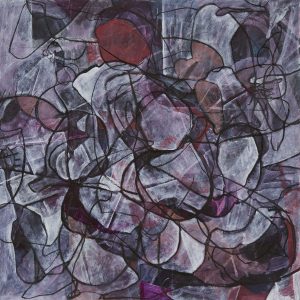
Arrangement No. 7 (The gypsy, the whiskey and the way back home) is possessed of a dark moody almost ominous palette of fading mauves, plum and brownish-purple, a large spot of liver-red perhaps signals inchoate thoughts of visceral exposition.
Perhaps vulnerability is the link that councils intuition to consider all options as suggested in the title (The gypsy, the whiskey and the way back home). The dual notions of both endlessly moving (the gypsy) and persisting at one end (uncertainty with endurance), and coming back home at the other (arrival with a semblance of certainty).
Together the mutating charcoals and fading silvery lights indicative of the questioning mind glimpsing success midway through the fight.
The fight can be noble and dignified, irrespective the vision is clear, it is incumbent upon the artist to believe he can win the fight – the whiskey can help or hinder.
He creates passages into the narrative of the composition to unveil the complexity of themes within the work.
While arguably all works of art are visual poems Piper’s unique life experiences forge a singular language that is his alone as are the peculiar nature of the complexities his art is invested with.
The dark meandering line is an element common to all works in the series – it resembles watercourses (creek to river) or tracks embedded in the landscape. While the region is awash with manifestations of water, Tumut itself resides on the Tumut River. Water as part of nature in symbiosis, is a primeval ingredient of life on earth – it is an ineluctable feature for both man and nature.
While it is possible to view the black line as a representational feature of the landscape, it works analogously – to symbolise the connective tissue of the artist’s musings and wanderings around the thread of ideas pertaining to each work.
In this series, the black line has a powerful psychological edge in the circuitous journey from one place to another, from a single inchoate concept to the spread of dense fully formed works of art.
Just as the little creeks and brooks feed into bigger water channels, so the long journey is comprised of circular activity: advancing, returning, reworking, resolving, pushing through. All major journeys (through land or problem) are comprised of a series of small sometimes random events and intuitive decisions, yet all are singular.
Thirdly, is Piper’s use of the word grapple. Grapple is a significant metaphor; as described he grapples [birds] mid-flight as if a specimen pinned down to be examined, twisted and manipulated into its final resolution. One meaning of grapple is to have a close up one-on-one fight. In the Colosseum, the gladiators grappled man or beast in a fight, if not to death then to a resolution those in power were happy with.
Piper grapples with the demons in his studio,
…we gaze upon the artist as he ‘lets blood’, presenting his most personal self in the act of painting.
As mentioned, the battle is fought on multiple fronts including refining and retaining the concept, perpetually subordinating the will to the task at hand, remaining motivated when chaos reigns, regaining the momentum each day. The pressure to remain true to yourself, your original idea and the legions of residual expectations (both personal and public) is comparable to a fight to the death in the studio.
The sum of these examples can be reduced to the shadow, Piper’s other which must be overcome or put down; he must vanquish his dissenting voice.
The morally superior has to wrest control from the inferior opportunistic naysayer, one infinitely more powerful when roaring from the mountaintop of personal and pressured expectations.
If it has been believed hitherto that the human shadow was the source of all evil, it can now be ascertained on closer investigation that the unconscious man, that is, his shadow, does not consist only of morally repressible tendencies, but also displays a number of good qualities, such as normal instincts, appropriate reactions, realistic insights, creative impulses, etc.
Thus the success of the Valley – Below as a body, indicates Piper’s personal struggle in the studio, one that equates, in terms of both endurance and ferocity, to the gladiatorial conquest, can be described as sublimation: hence denying the shadow, cast off the negative other by harnessing and transforming those formidable destructive attributes into complex successful and self-identifying works of art. Quashing the beast within to arrive in the present hopefully sated and fulfilled.

If proof were required of the efficacy of this statement, one has only to contemplate Arrangement No. 17 (Titan), while it is one of the more structured geometrically it exhibits a soft refinement in deep reddish browns washed out translucent whites, greys and earthy pinks. This work is a lyrical symphony with the artist as authoritative conductor; while each separate instrument is important, it must heard as part of the greater orchestra of highs and lows, pulses and clashes, movements and stillness; the whole one of soft interjections and melodious harmony. There exists a continuum of tension in the work courtesy of these analogies.
As an exploration of self, I am dissecting my life…into its final resolution
A blend of animal and quasi-human visceral forms seems apparent – a heart, liver, spleen, lungs? Additionally, further tension exists between the dissecting of oneself as part of the all in battle in the studio.
Certainly, death can be a thing of beauty and this work asserts hope if not an absolute triumph over the beast within.
While, structural platforms and tile-like forms hint at the built structure of the Colosseum, in this instance the blood-letting favours the expected victor, subsequently, Arrangement No. 17 (Titan) beats with the resultant victor’s eloquent sigh of relief.
…interpreting and understanding self and lived experiences. There is a little part of you that gets left behind in the work, like a shard of your soul.
__________________________________________
I submit, more than a shard: the unmistakable quality and quantity born of heart, soul and mind – a big part of Piper’s evolving and identifiable self.
Unless directly referenced all quotes in italics refer to emails from the artist to the writer 20 Nov 2017 and 18 June 2018, or Metro Gallery’s promotional text.
Featured image: Arrangement No. 3 (The arena, where victory is guaranteed)

